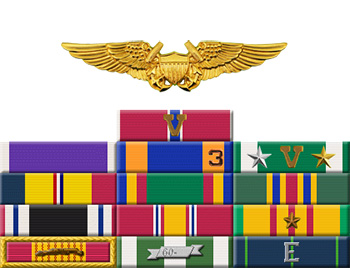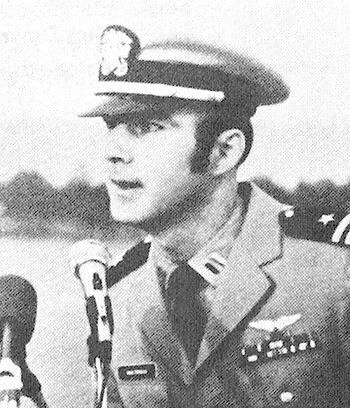
|
Frederick J. Masterson |
 |
|||
| Rank, Service | ||||
Lieutenant Commander O-4, U.S. Navy |
||||
| Veteran of: | ||||
|
||||
| Tribute: | ||||
Frederick Masterson was born on June 24, 1944, in Oakland, California. He enlisted in the U.S. Naval Reserve on June 30, 1962, and attended the Air Force ROTC program for one year while attending Memphis State University before entering the U.S. Naval Academy in June 1963. He was commissioned an Ensign in the U.S. Navy on June 6, 1967, and then served as an engineering and damage control officer aboard the destroyer escort USS John Willis (DE-1027) from June 1967 to November 1968. Ens Masterson next attended Naval Flight Officer training at NAS Pensacola, Florida, from November 1968 to June 1969, and then Radar Intercept Officer (RIO) training at NAS Glynco, Georgia, from June to September 1969. LtJg Masterson attended F-4 Phantom II Replacement Air Group training with VF-101 at NAS Oceana, Virginia, from September 1969 to May 1970, and then served as an F-4 RIO with VF-103 at NAS Oceana from May 1970 to May 1972, and deployed aboard the aircraft carrier USS Saratoga (CV-60) from May 1972 until he was forced to eject over North Vietnam and was taken as a Prisoner of War on July 11, 1972. After spending 262 days in captivity, LT Masterson was released during Operation Homecoming on March 29, 1973. He was briefly hospitalized at the Naval Hospital at Bremerton, Washington, and then served with the F-4 Replacement Air Group VF-101 at NAS Oceana from June 1974 until he was medically retired from the Navy on March 1, 1977. Frederick Masterson died in an auto accident on November 30, 2001, and was buried at the U.S. Naval Academy Cemetery. |
||||
|
||||

